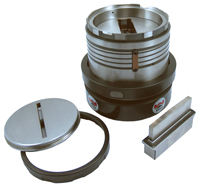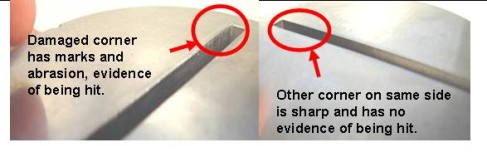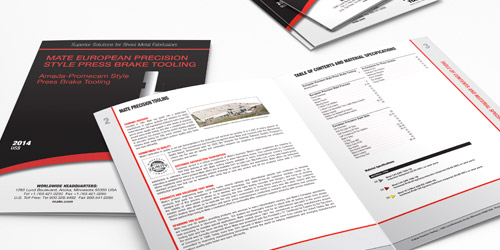Slitting Tool Optimization and Performance
Solution Bulletin
The Problem:
Slitting tools are expensive and fabricators depend upon them to be the backbone of most punching processes. Used and abused each and every day, slitting tools have to survive partial hits, unbalanced punching loads, high-speed operation, and many material types and thicknesses without failure. Slitting tools directly impact part qu ality and the cost of downstream processes such as deburring, press brake, and assembly. Having a robust, long-lived slitting tool will make a positive contribution to your bottom line and improve your punching processes all the time.
ality and the cost of downstream processes such as deburring, press brake, and assembly. Having a robust, long-lived slitting tool will make a positive contribution to your bottom line and improve your punching processes all the time.
The Mate Solution:
Achieving maximum performance from your slitting tools can dramatically reduce tooling costs and increase your press productivity. Following are tips to help optimize your slitting  tool performance.
tool performance.
Tips:
- Slitting tool life will be extended when the punch goes into the center of the die. This requires the press to be in good condition and have precise alignment. Angular misalignment is a bigger problem on longer tools like slitting tools and is visible by looking at the wear patterns on the punch and die. Wear to the punch guide, die shoe and orientation keys also contribute to shorter tool life.
- Fully-guided slitting tools increase punch and die life by precisely and securely positioning the punch point so it enters the center of the die, especially when using partial hits. This allows the press to run at maximum speed and part quality to be at its best.
- Remember that the punching force calculation for any tool is correct when the tools are sharp and the die clearance is correct for the material being punched. As tools become dull, the punching force increases; so, a best practice is to limit the punching force needed for a slitting tool to 80% of the press capacity.
- Thick turret clamp clearing dies and strippers, commonly used with slitting tools, have a smaller surface area that can lead to sheet marking when using standard guide assemblies. The solution is Mate’s Ultra Light™ spring packs and Ultra Light™ guide assemblies that have reduced stripping force, which is also adjustable in the C, D, and E stations.

